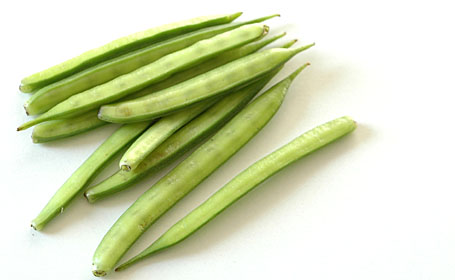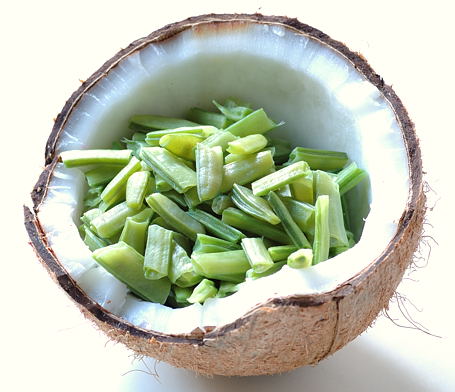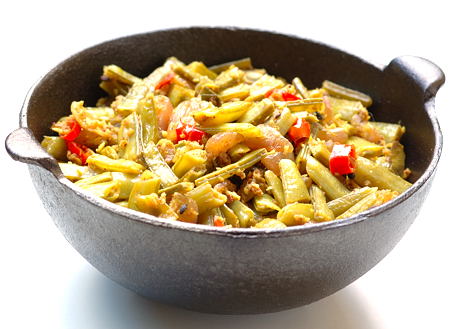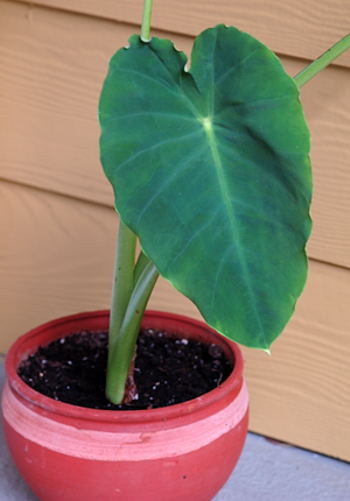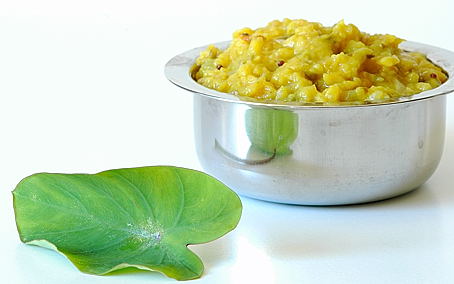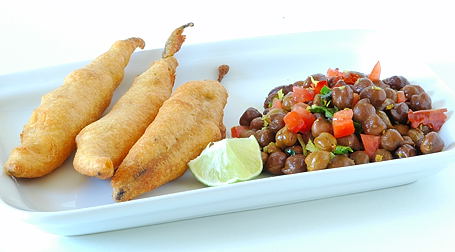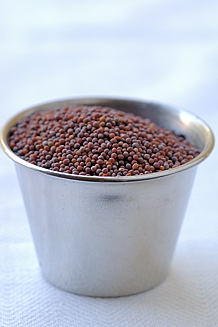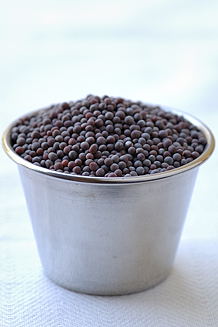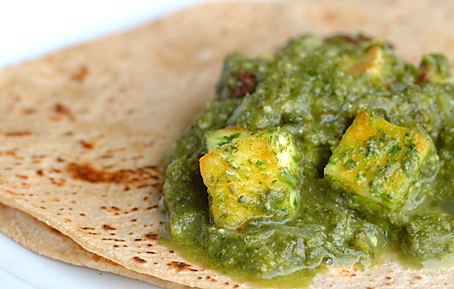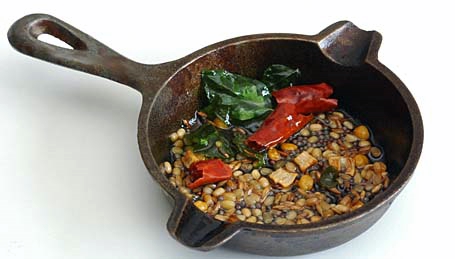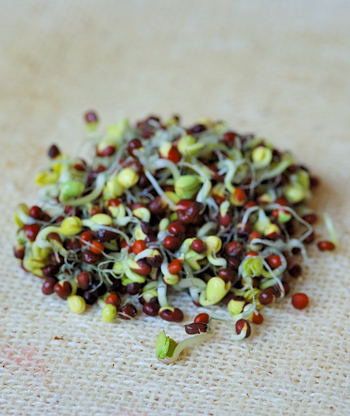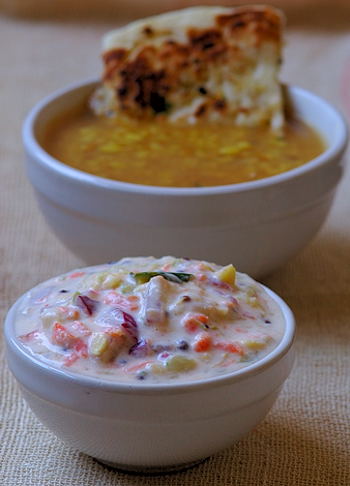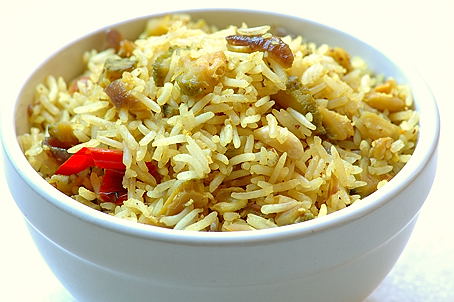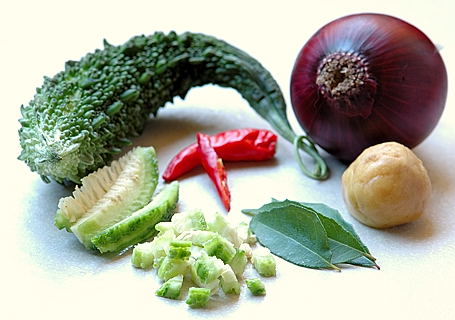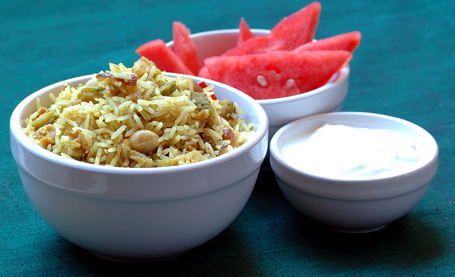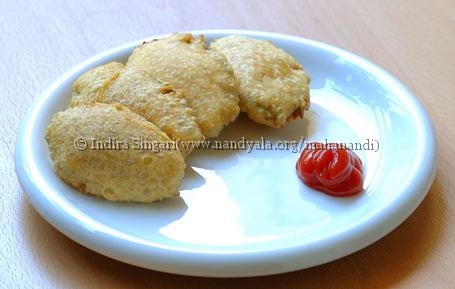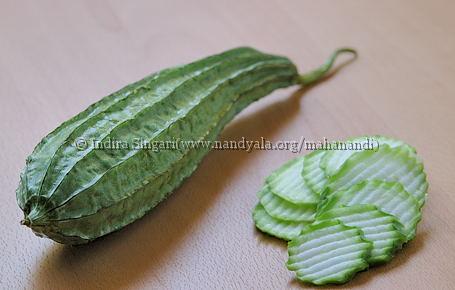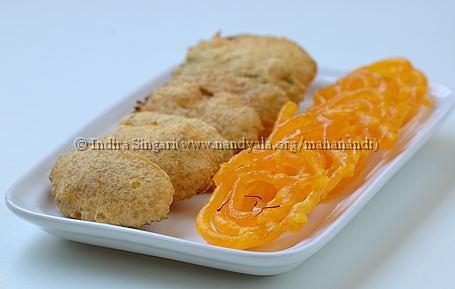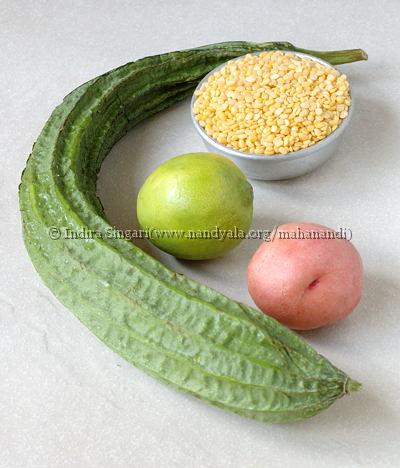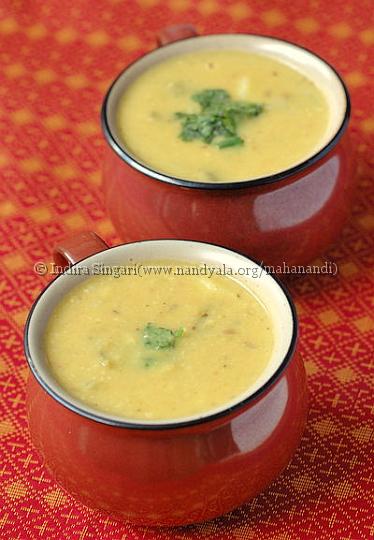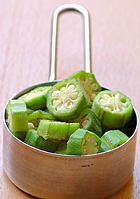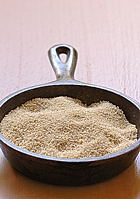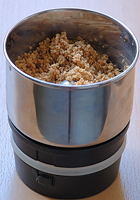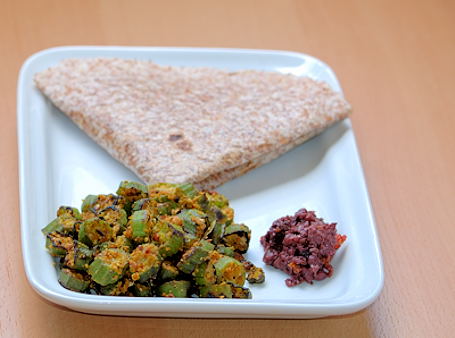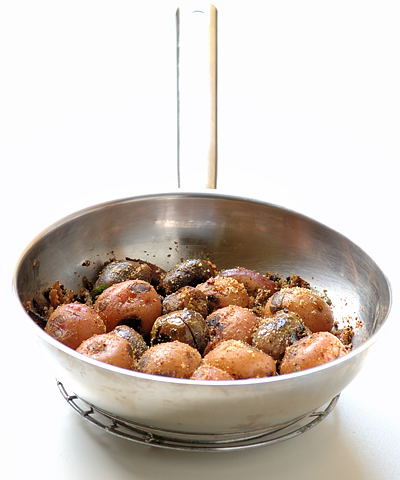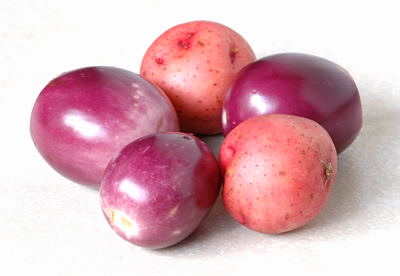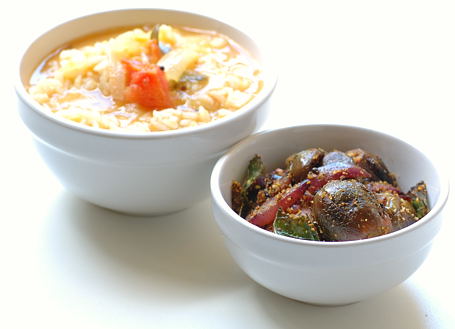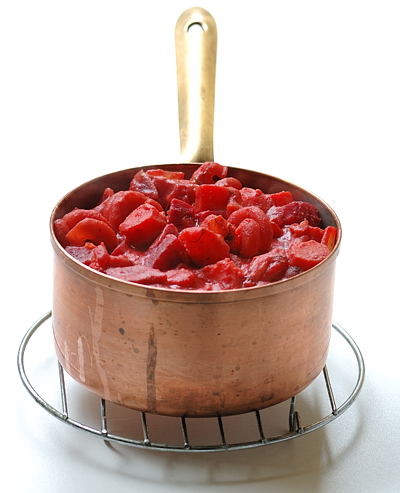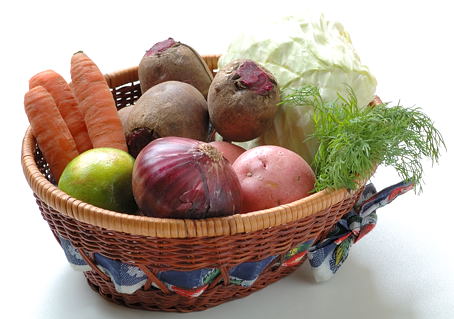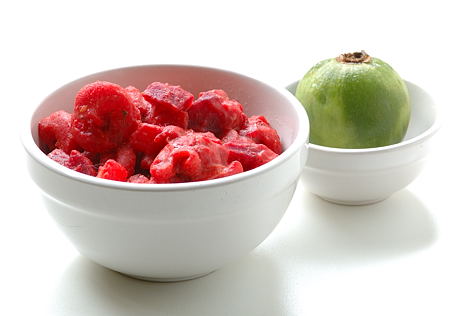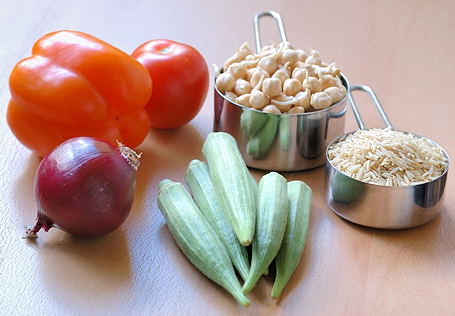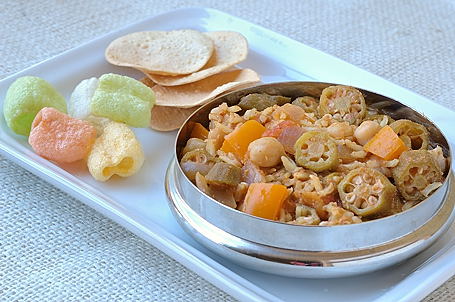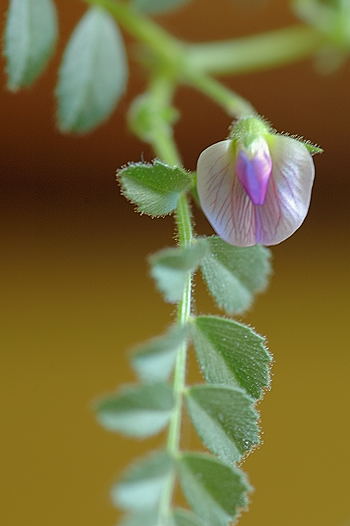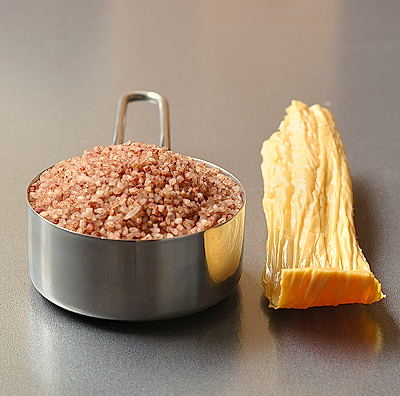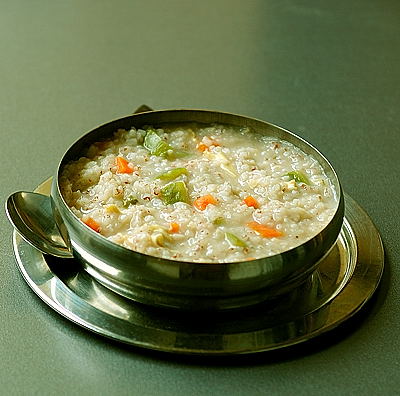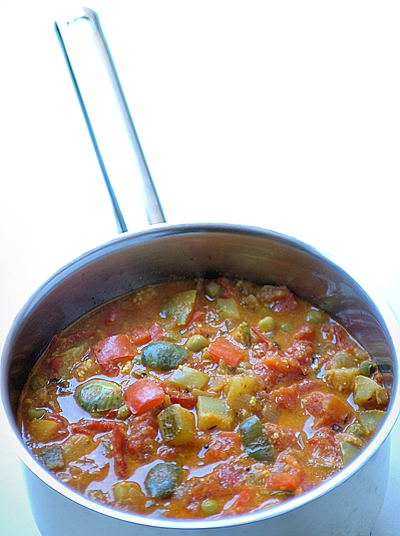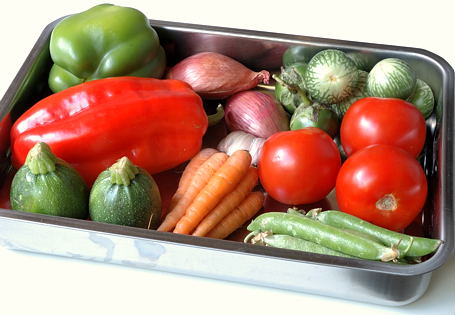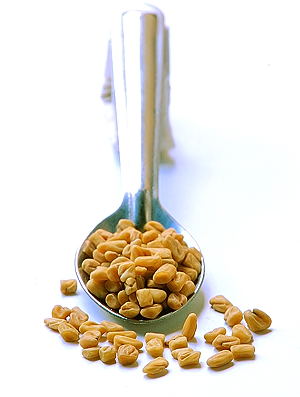
The one flavor category that is fading away from our meals today is the “bitter†flavor. The bitter taste category is considered to be one of the most healing and cleansing tastes by Ayurveda. Use of fenugreek seeds in traditional tadka is a good way to incorporate the bitter taste once in a while.
Fenugreek (Trigonella foenum-graecum) is a member of the pea family. Fenugreek plant is an annual with yellowish-white flowers and its pods contain 10-20 seeds. The common method of harvesting is to uproot the whole plant, allow them to dry in the Sun and then remove the seeds by threshing.
Whole fenugreek seeds have no aroma but once ground, they release flavor and sharp, spicy aroma. These seeds are very high in protein. 3.5 ounces (100 gms) of uncooked seeds supply 23 gms of protein. This is almost equivalent to the amount of protein found in a 3 -3.5 ounces serving of meat, fish or poultry.
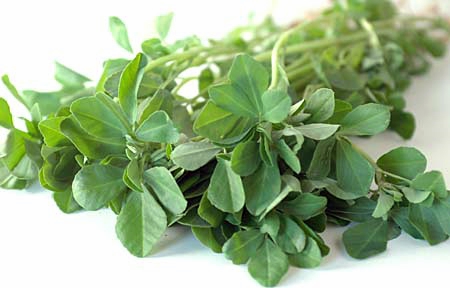
Fresh Fenugreek Leaves (Menthi Kura, Methi)
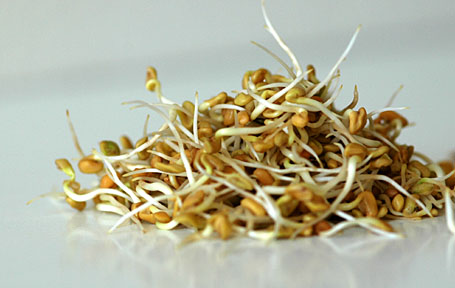
Fenugreek Sprouts (Methi, Menthula Molakalu)
Fenugreek seed sprouts are used in salads. These sprouts are rich in iron and phosphorous. Juice from the sprouts is considered a cleanser of the kidneys and bladder.
In Maharashtra, we make an interesting pickle with methi sprouts, called Methi-Mirchi. This pickle stays good just for one to two days .
¼ cup fenugreek sprouts
1 Green Chilli – slit in middle and then cut into small pieces
2 tsp Mustard seeds
Pinch each – Asafoetida and turmeric
1 Lemon and salt to taste
Heat oil. Add mustards seeds, asafoetida, and turmeric. When mustard seeds start to pop, then add fenugreek sprouts and green Chilli. Mix well. Take off the heat. Add salt to taste and squeeze lemon juice. This pickle has a great combination of bitter, spicy and sour tastes.
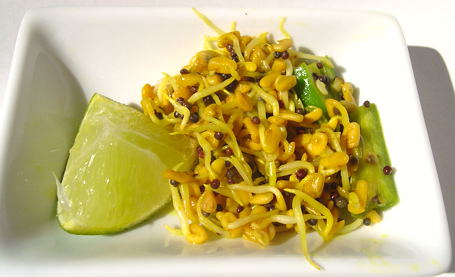
Methi-Mirchi Pickle ~ From Anjali’s Kitchen
Fenugreek seeds are antiseptic and warming. It also has expectorant qualities and is used to ease coughs and sore throat. Fenugreek tea is used as a Blood builder and cleanser.
To make fenugreek tea – bruise 2 tablespoons of seeds. Add four cups of water and bring to a boil. Cover and simmer for ten minutes. Add honey or lemon to flavor.
One of the five spices in Panch phoran is fenugreek seed. They are also added in curry powder, sambar powder and essential picking spice. It’s a very common practice for most of us to add a few fenugreek seeds to tadka when making everyday dal.
Dal-Methi with fenugreek seeds is a common dal among us Maharashtrians. I make this dal at least 2-3 times a month and it’s a good way to introduce fenugreek seeds to kids.
To one cup toor dal, add two to three teaspoons of fenugreek seeds and two cups of water. Pressure-cook to soft. Heat oil. Add mustard seeds, turmeric, green chilli and asafoetida. Add the toor dal-methi mix. Cook for two minutes. Season with salt and cilantro. Serve with roti.
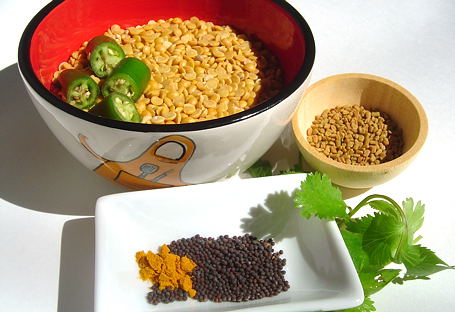
Ingredients for Dal-Methi ~ from Anjali’s Kitchen
Ah! And how can we talk about fenugreek seeds and not talk about Fenugreek Seed Laddu (Methi Laddu)? Considered to be good for health and winter warmers, methi laddus are consumed in winter season to ward off cold, cough and fever. Here is a simple methi laddu recipe from Bawarchi.
It’s also a common practice in many parts of India to give methi laddu to the lactating mothers. I had these laddus after my daughters birth and many who have tasted these laddus would agree with me that they do not bring out the “hmm…” feeling. But Lakshmi Ammal of “Cook Food and Serve Love” has come up with an interesting Sweet Fenugreek Pongal. I wish I knew about this pongal eight years back.:) (Since fenugreek seeds are considered a uterine stimulant, they are avoided during pregnancy.)
Packed with protein and punch, and with so many benefits, it’s no wonder that the tiny fenugreek seeds have earned a very respectable place in our Indian spice box.
~ Guest Article by Anjali Damerla of Supreme Spice
If you have questions about fenugreek seeds, please post them in comments section. Anjali would be glad to answer them for you. Thanks.
